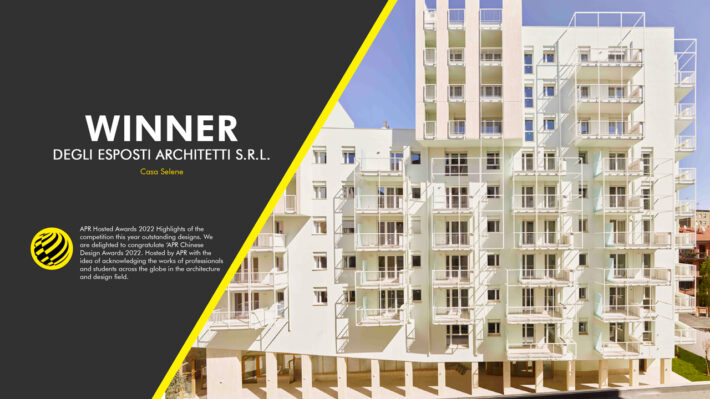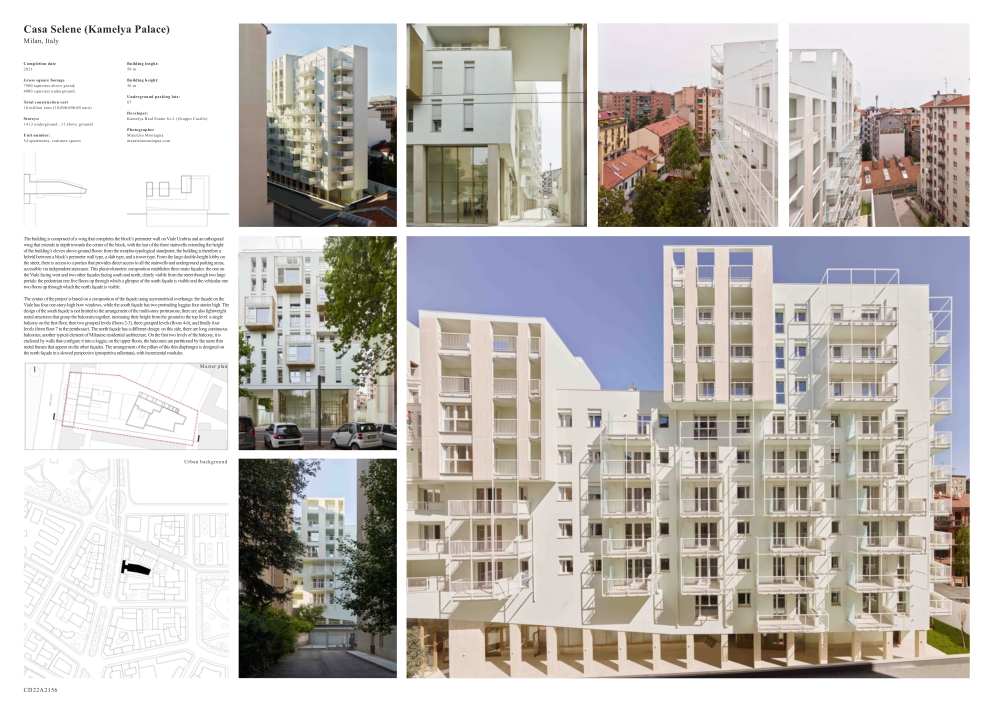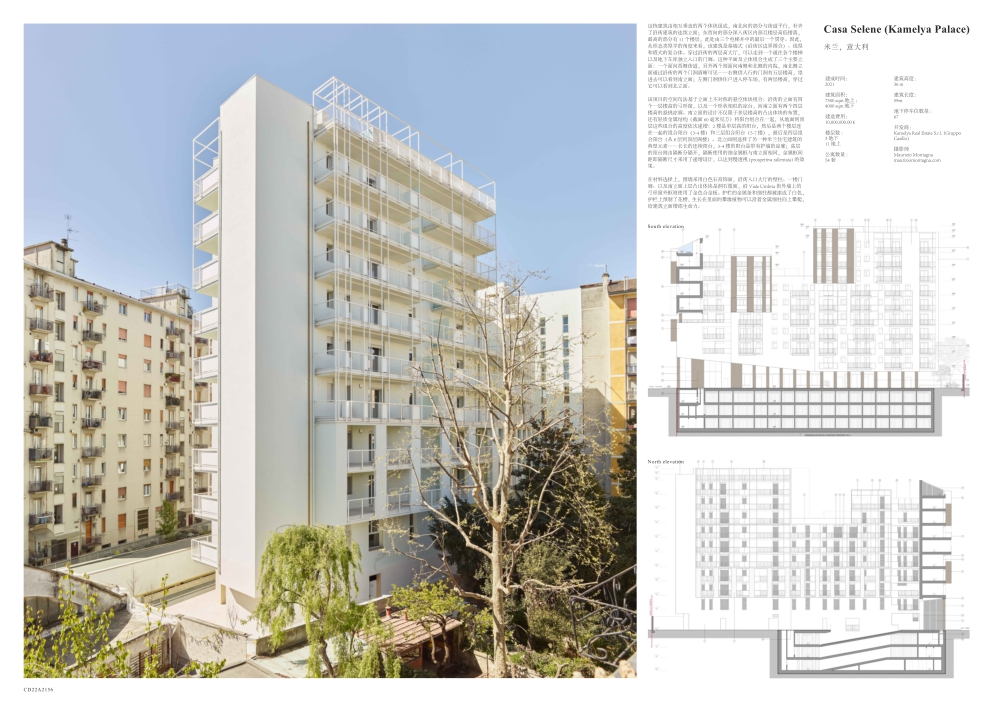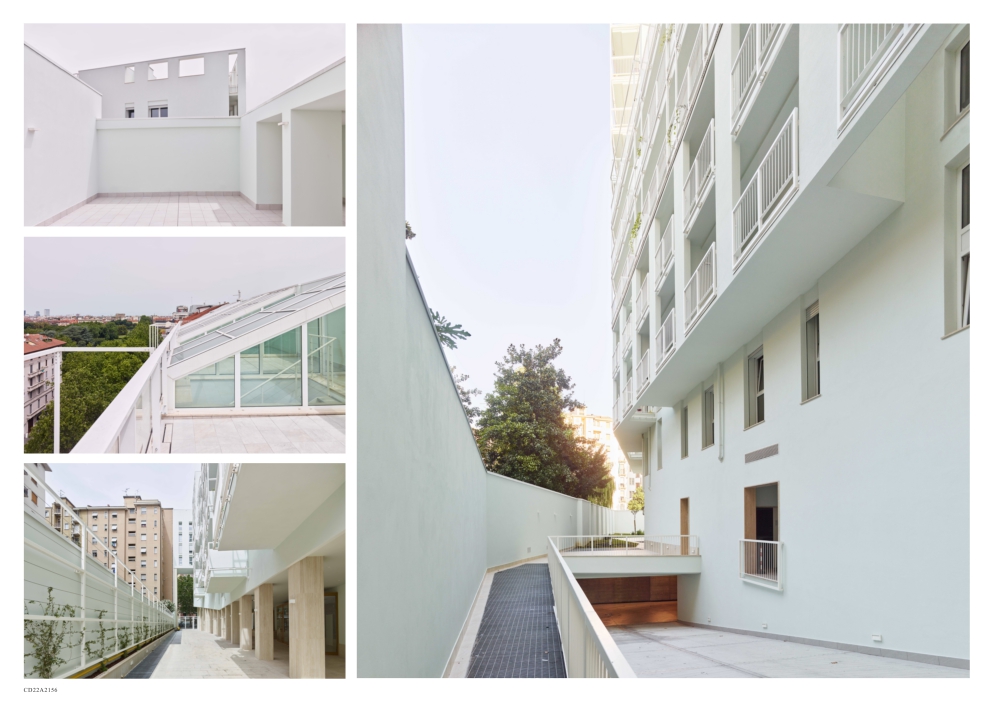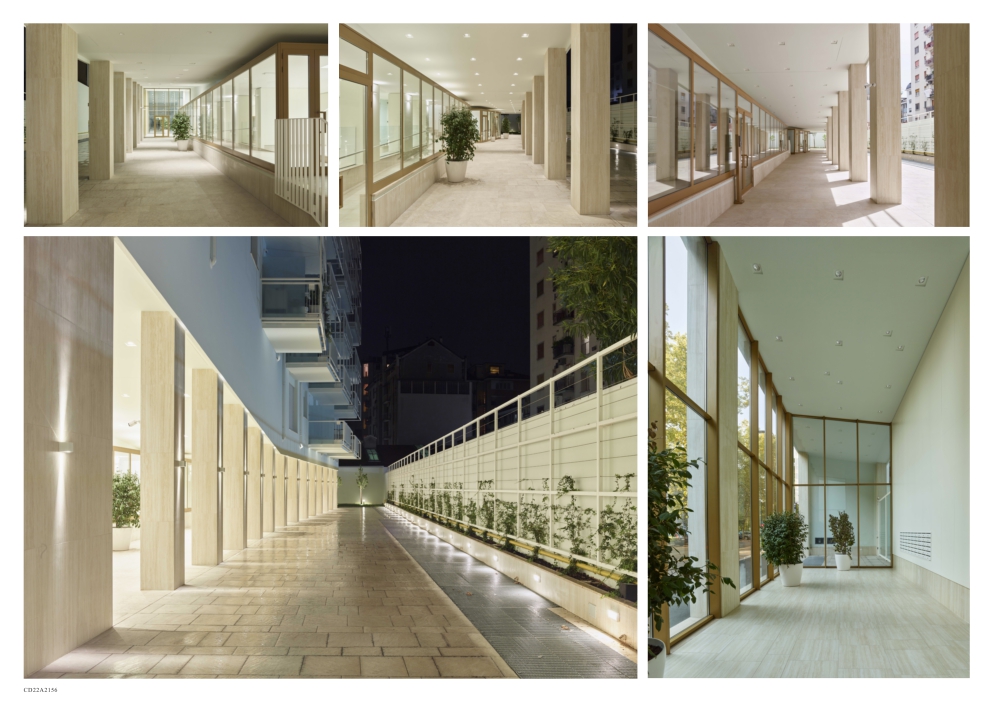The building is composed of a wing that completes the block’s perimeter wall on Viale Umbria and an orthogonal wing that extends in depth towards the center of the block, with the last of the three stairwells extending the height of the building’s eleven above-ground floors: from the morpho-typological standpoint, the building is therefore a hybrid between a block’s perimeter wall type, a slab type, and a tower type. From the large double-height lobby on the street, there is access to a portico that provides direct access to all the stairwells and underground parking areas, accessible via independent staircases. This planivolumetric composition establishes three main façades: the one on the Viale facing west and two other façades facing south and north, clearly visible from the street through two large portals: the pedestrian one five floors up through which a glimpse of the south façade is visible and the vehicular one two floors up through which the north façade is visible.
Urban Design & Architecture Design Awards 2023: Entries Open!
Gold 🏆 Winner
Chinese Design Awards 2022
Casa Selene
Best of Residential Built
Firm
Degli Esposti Architetti S.R.L.
Architect/Designer
Lorenzo Degli Esposti
Design Team
Paolo Lazza
Location
Milan, Italy
Country
Italy
Photographer/Copyright
©Maurizio Montagna
The syntax of the project is based on a composition of the façade using asymmetrical overhangs: the façade on the Viale has four one-story-high bow windows, while the south façade has two protruding loggias four stories high. The design of the south façade is not limited to the arrangement of the multi-story protrusions; there are also lightweight metal structures that group the balconies together, increasing their height from the ground to the top level: a single balcony on the first floor, then two grouped levels (floors 2-3), three grouped levels (floors 4-6), and finally four levels (from floor 7 to the penthouse). The north façade has a different design: on this side, there are long continuous balconies, another typical element of Milanese residential architecture. On the first two levels of the balcony, it is enclosed by walls that configure it into a loggia; on the upper floors, the balconies are partitioned by the same thin metal frames that appear on the other façades. The arrangement of the pillars of this thin diaphragm is designed on the north façade in a slowed perspective (prospettiva rallentata), with incremental modules.


